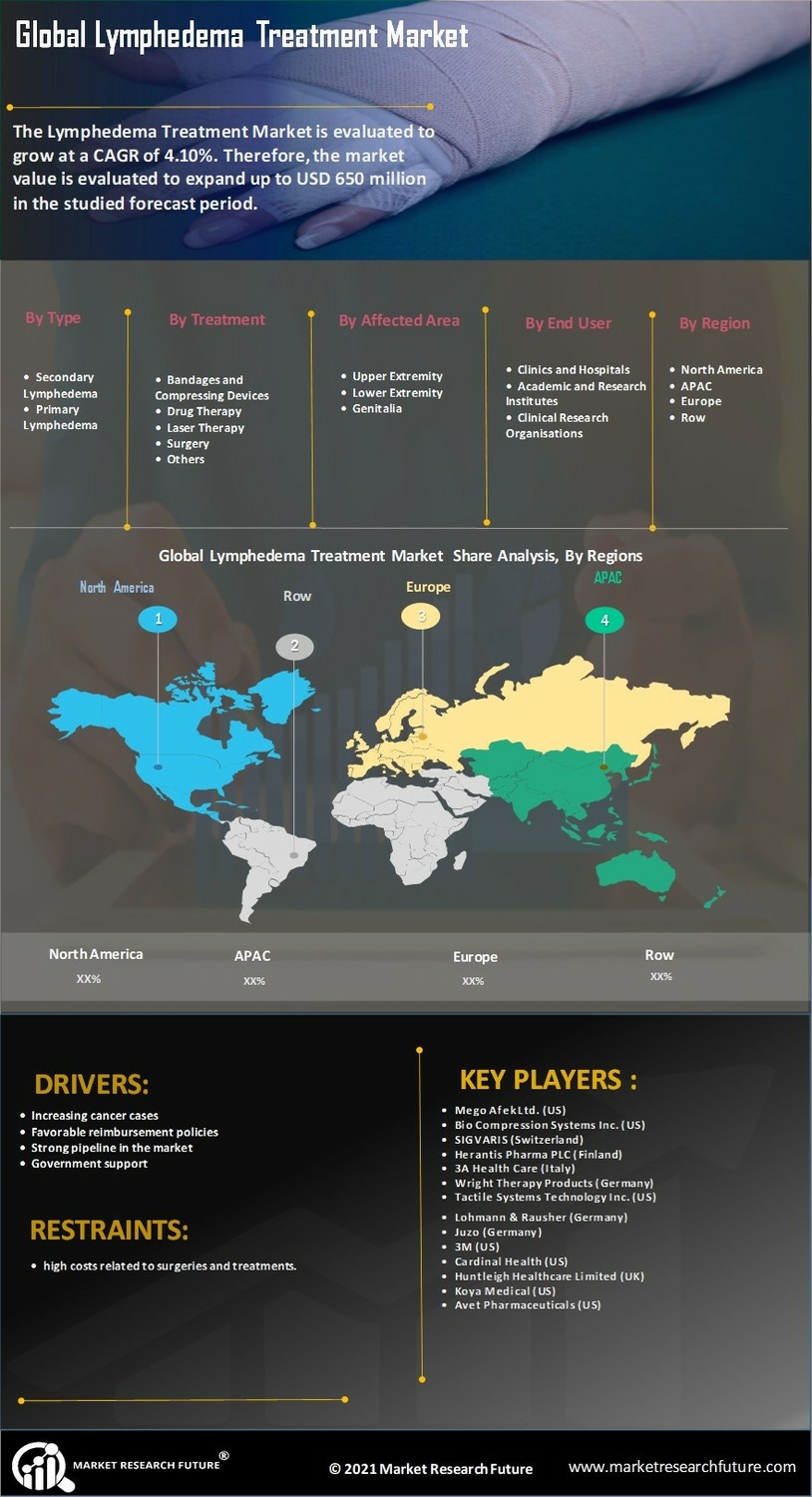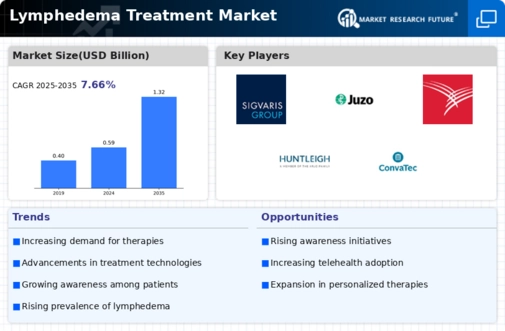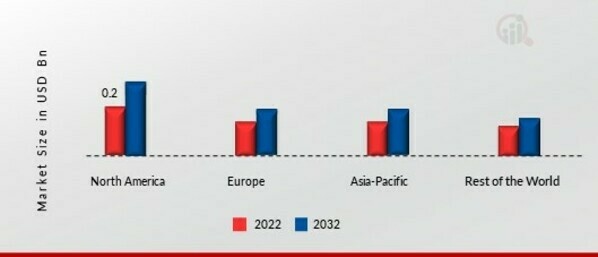Market Growth Projections
Market growth projections for the Global Lymphedema Treatment Market Industry indicate a robust upward trajectory. With a projected market value of 0.59 USD Billion in 2024, the industry is expected to expand significantly, reaching an estimated 1.32 USD Billion by 2035. This growth reflects a compound annual growth rate (CAGR) of 7.66% from 2025 to 2035. Such projections are indicative of the increasing demand for effective lymphedema treatments and the ongoing development of innovative therapies. As the market evolves, stakeholders are likely to explore new opportunities, enhancing the overall landscape of lymphedema management.
Growing Geriatric Population
The aging population is a significant driver of the Global Lymphedema Treatment Market Industry. As individuals age, the risk of developing lymphedema increases due to factors such as decreased mobility and the prevalence of chronic diseases. According to demographic studies, the global geriatric population is projected to reach 1.5 billion by 2050, which will likely lead to a corresponding rise in lymphedema cases. This demographic shift necessitates the development of targeted treatment strategies and products tailored to the needs of older adults. Consequently, the market is expected to grow, with a compound annual growth rate (CAGR) of 7.66% anticipated from 2025 to 2035.
Rising Prevalence of Lymphedema
The Global Lymphedema Treatment Market Industry is experiencing growth due to the increasing prevalence of lymphedema worldwide. Factors such as cancer treatments, obesity, and genetic conditions contribute to the rising incidence of this condition. For instance, it is estimated that approximately 3 to 5 million individuals in the United States alone suffer from lymphedema, indicating a substantial patient population requiring treatment. This growing demographic drives demand for effective therapies and management solutions, thereby propelling the market forward. As awareness of lymphedema increases, the need for innovative treatment options becomes more pronounced, further stimulating market growth.
Increased Awareness and Education
The Global Lymphedema Treatment Market Industry benefits from heightened awareness and education surrounding lymphedema. Campaigns led by healthcare organizations and patient advocacy groups aim to inform both the public and healthcare professionals about the condition and its management. This increased awareness is crucial, as it encourages early diagnosis and treatment, which can significantly improve patient outcomes. Furthermore, educational initiatives often lead to greater demand for specialized treatment services and products. As more individuals recognize the signs and symptoms of lymphedema, the market is expected to expand, with projections indicating a market value of 0.59 USD Billion in 2024.
Advancements in Treatment Technologies
Technological advancements play a pivotal role in shaping the Global Lymphedema Treatment Market Industry. Innovations in treatment modalities, such as pneumatic compression devices, laser therapy, and advanced lymphatic drainage techniques, enhance patient outcomes and improve quality of life. For example, the introduction of wearable devices that monitor lymphatic function represents a significant leap in personalized care. These advancements not only facilitate more effective management of lymphedema but also attract investment and research into new therapies. As these technologies evolve, they are likely to expand the market, appealing to both healthcare providers and patients seeking better treatment options.
Regulatory Support and Reimbursement Policies
Regulatory support and favorable reimbursement policies significantly influence the Global Lymphedema Treatment Market Industry. Governments and health authorities are increasingly recognizing the importance of lymphedema management, leading to the establishment of guidelines and reimbursement frameworks that facilitate access to treatment. For instance, some countries have introduced policies that cover the costs of compression garments and therapeutic devices, making them more accessible to patients. This support not only encourages healthcare providers to offer lymphedema treatments but also enhances patient compliance and satisfaction. As these policies evolve, they are likely to foster market growth, contributing to an estimated market value of 1.32 USD Billion by 2035.







